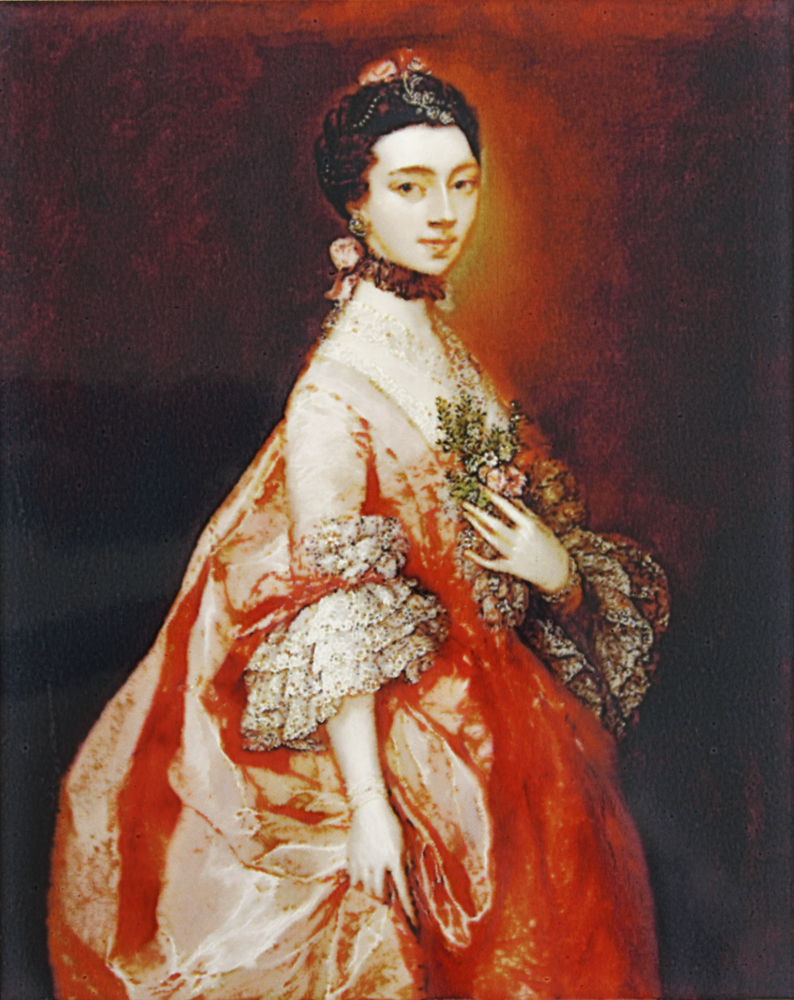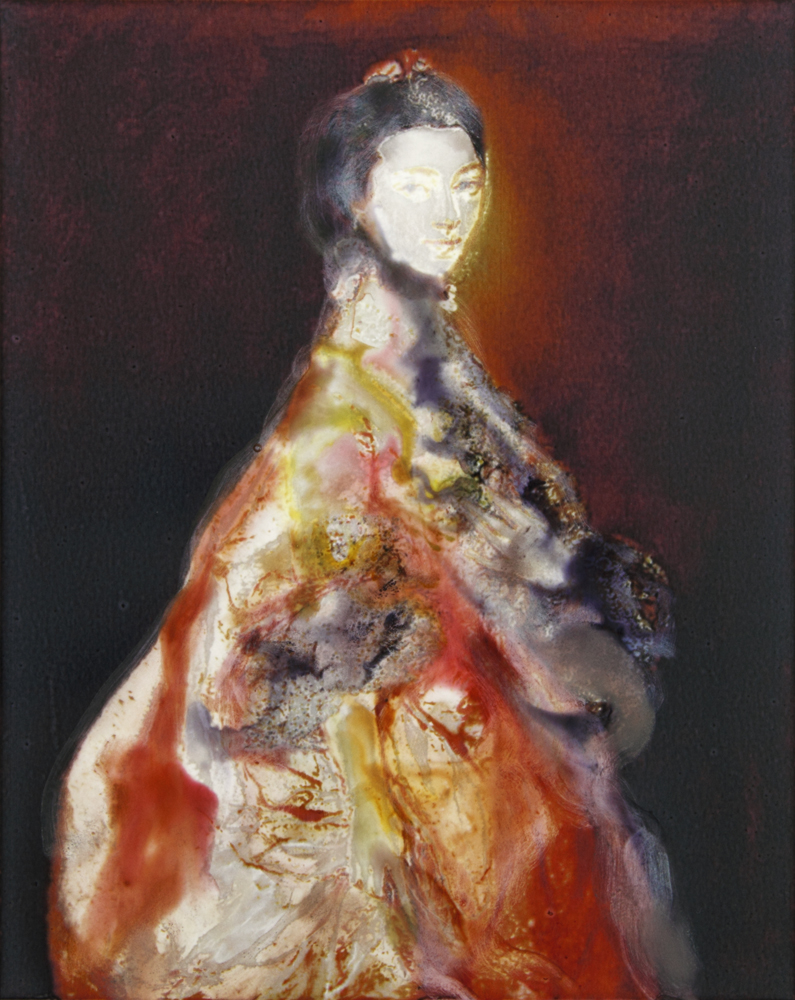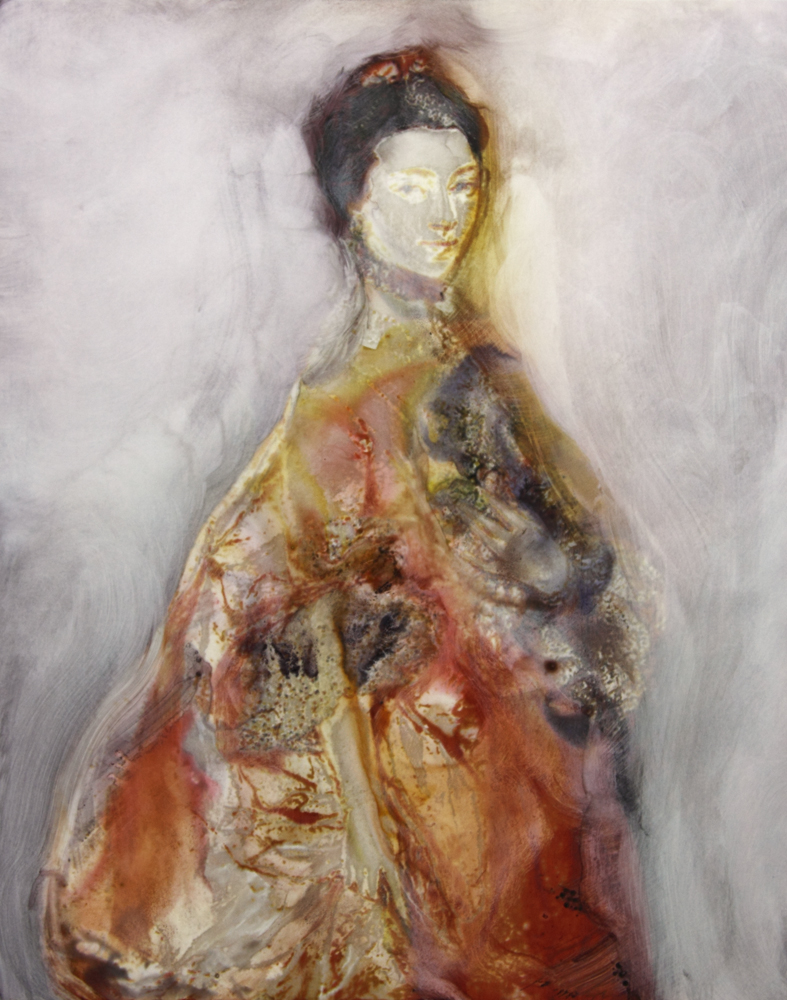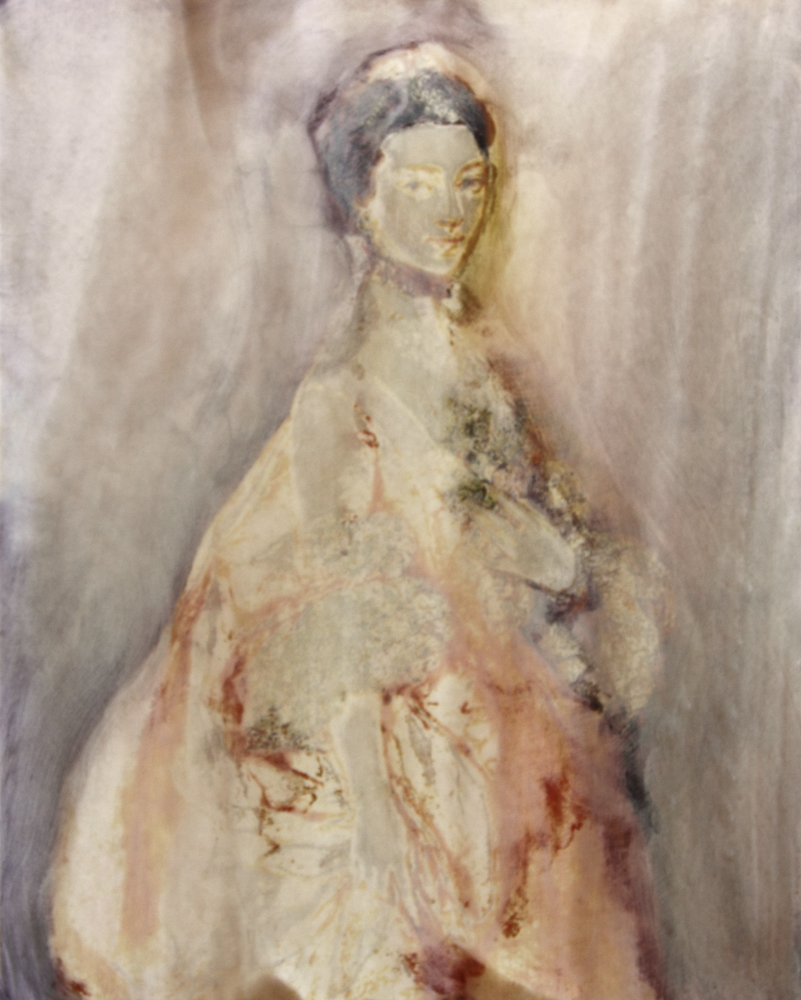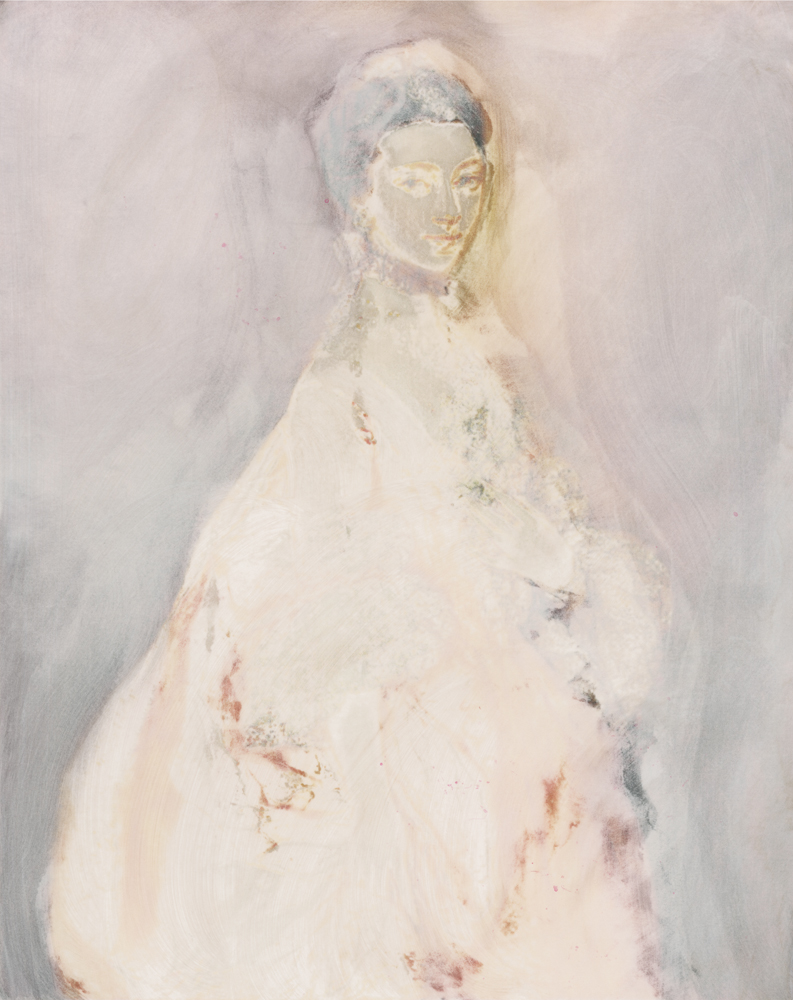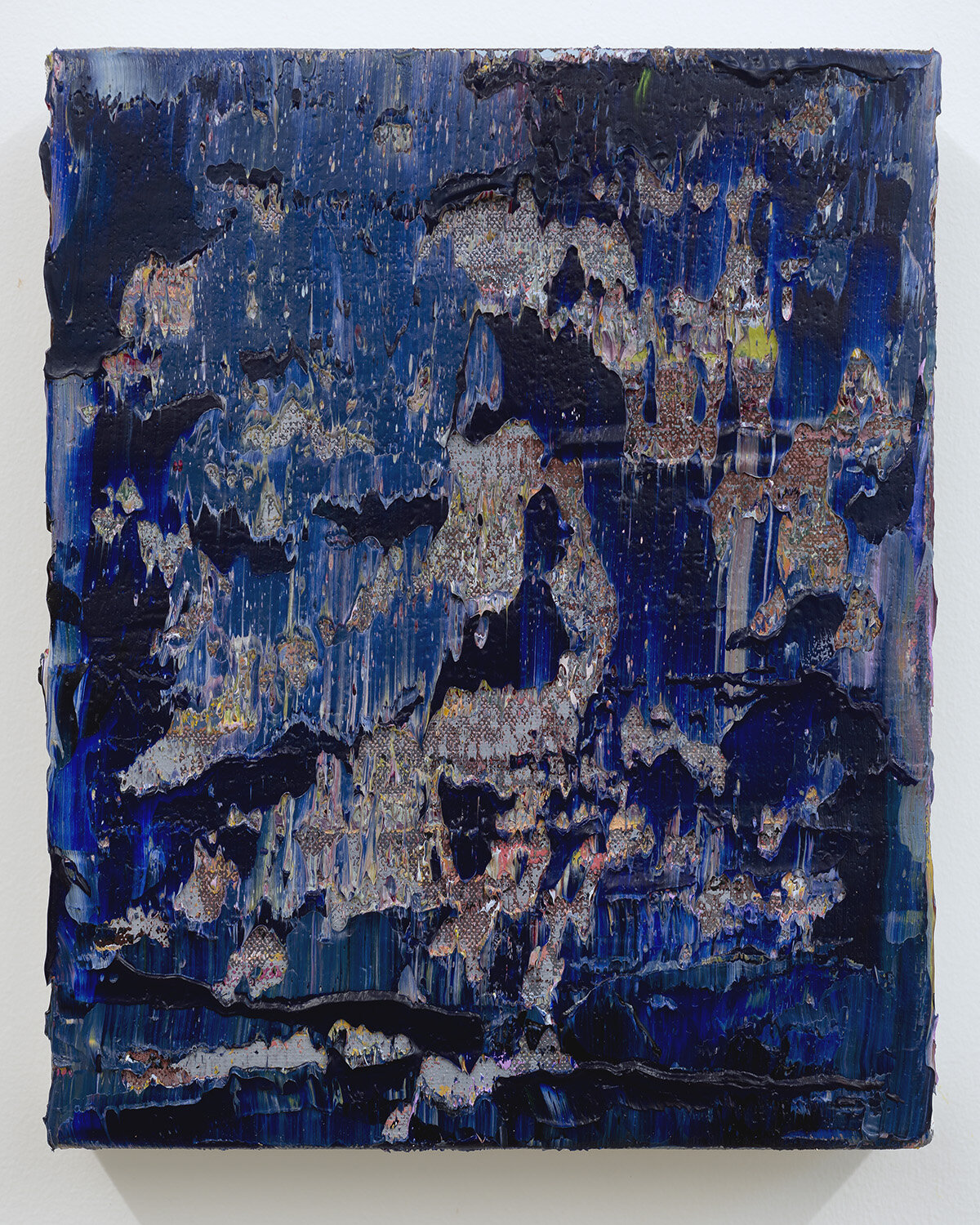part two: making
The body’s knowledge is exhumed through the making of art. The sensations, perceptions and emotions generated in the act of looking remain locked within the body until expelled through the act of making. For me, the curiosity prompted by the sight of surfaces can only be quelled by touch, and when I engage with materials in the creation of images, my eyes seem to touch the surface and uncover the unseen. An erotics of looking propagates an erotics of making.
““When the frustrated Degas, who was dabbling in poetry, had asked Mallarme why, when he was so full of ideas, he was having so much difficulty with the sonnet he was trying to write, Mallarme had retorted. “But Degas, it is not with ideas that one makes poetry. It is with words.””
— Tamar Garb”
While artists often speak of the solitude of the studio, it is the one place where I am never alone. In the act of making, I am joined by the body and will of each medium. Even the term “medium” itself is suggestive of its mysterious presence; it refers to not just an artistic material, but also a mediator, one who channels the world of spirits. In Plato’s The Symposium (202(e)), Diotima explains to Socrates the nature of a spirit, such as Eros, as one who “falls between god and human”.
““[Spirits] interpret and carry messages from humans to gods and from gods to humans. They convey prayers and sacrifices from humans, and commands gifts in return for sacrifices from gods. Being intermediate between the other two, they fill the gap between them, and enable the universe to form an interconnected whole.””
In the studio, the mediums of paint, print, photography, and textiles form a bridge between my self and my art. Every discovery I have made in my art has been born from my interaction with the materials.
I used to identify myself as a painter, but that definition no longer holds. I have adopted all forms of image-making into my practice, and I am learning the unique and vital wisdom of each. I am discovering each medium’s distinct language and method of seduction, and their own sources of sensuality and emotion. Each medium contains its own distinct relationship to the image, and each responds differently to my intentions and my touch. The sensibilities of one are continually influencing my response to the others.
TEXTILES
Detail of the front pattern pieces for a tailored coat I made, cut from a quilt I designed for the project.
Fabric is synonymous with our body. It lives for touch and dreams of beauty. It can comfort and protect but requires care in return. And whether from the scissor’s blades or the needle’s point, its interactions with violence shape its potential. Fabric is the body that transforms my own.
screenprint
Amanda Clyne, screenprints in process
Screen-printing is a medium of mist. Although I know of its capacity for swipes of bold graphics, I am more enamored by its inherent need to atomize the world through its porous veil. With a drag of the strong rubber blade across the screen’s fine mesh, I witness the emergence of a refined but ghostly presence. The screen-printed image appears like an apparition.
intaglio
Intaglio carries an implicit violence in its process. Tools that scratch and gouge, baths of biting acid, and presses that powerfully force the fate of two surfaces together. The soft paper surfaces offer a bandage-like support to absorb the inky salve. The resulting marks are the trace of scars, an image built from wounds.
Intaglio plate with ground
photography
““The sense of the unattainable that can be evoked by photographs feeds
directly into the erotic feelings of those for whom desirability is enhanced
by distance.””
I have no emotive words for the camera. My love for the photograph does not come easily. As a viewer, I resist its documentary nature and consider it the medium most burdened with artifice. In Camera Lucida, Roland Barthes remarks how “…a photograph is always invisible: it is not it that we see.” * Yet it is this invisibility that grants it such power to deceive. As an artist, the artifice of photographs has been a consistent theme of much of my work, but I am now beginning to embrace the photograph not just as subject, but as medium.Exploiting its chameleon character, I photograph non-photographic processes with the hopes of foiling the viewer’s expectations. For me, the photograph and its digital kin seem most compelling when they turn the processes of image-making into a hall of mirrors.
* Roland Barthes, Camera Lucida (New York: Hill and Wang, 1980), 6.
Photographs of my process “erasing” the image of Gainsborough’s painted portrait.
The final image: Amanda Clyne, Gainsborough, Erased, 2014.
painting
Unlike the photograph, painting has an undeniable intimacy in its material presence. It has its genesis in the human hand, with every mark, every swipe of paint carrying the index of a sensing, desiring, thinking body. But the intimacy of paintings is not just due to their connection to the artist’s body, but to the body of paint itself. A painting is a form of collaboration between both paint and painter, and bearing witness to the entanglement of these two bodies is where its sensuality lies.
Amanda Clyne, “Monstrous”, oil on canvas, 8” x 10”, 2020.
““I start a painting by finishing it, then may proceed to unfinish it, make holes in it or undo it in various ways, as a kind of escape from that infinitude, or wiping down the canvas, getting at what is behind the painting... I ask myself questions: does painting even have an interior? Is it all exterior? Can you enter it, or are you just up against a wall?”
— Jacqueline Humphries”
Paint is the most luscious of all media, messy, meaty and stubborn. It exerts an aggressive presence, never wanting to be denied once it reaches the canvas. In the face of attempted obliteration, it fights to be remembered, its color and texture always leaving a trace. With each painting, I oscillate between modes of indulgence and denial, alternating between acts of burial and excavation. Ultimately it is for the viewer to complete the unearthing process.
Detail of “How to Hide” from my Woven Series. Oil on canvas, 2024.
In the studio, I move between printmaking and photography, painting and sewing, the material and digital, each work emerging from a composite of these processes. No method of image-making is out of bounds, and no medium is sacred. Every work is corrupted by the intervention of a competing medium, both in process and perspective, and each work has the potential to breed new works. Images beget images.
This re-production of images in my practice is not to further the genealogy of spectacle, but rather to exorcise my own relationship with an image. It is only through the act of making that I gain access to more intimate findings. Discoveries are made in the act of trying to make my sensations visible, in fighting to see beyond surface.
Every surface I create calls attention to the process of its making. Each finished artwork leaves my studio in a permanent state of undress.






